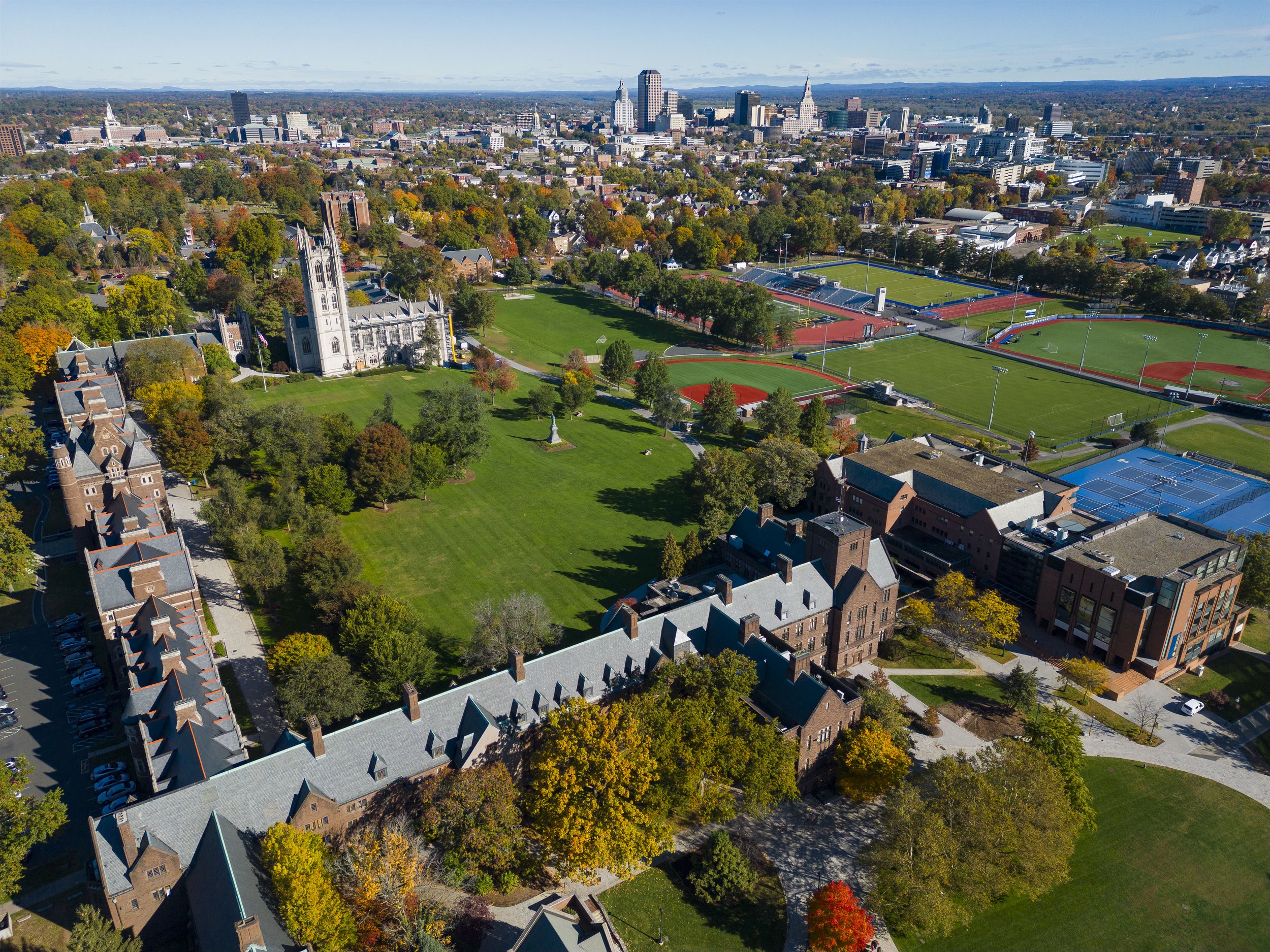
Adam D. Hill Group
Chemistry Department
Trinity College, Hartford, CT
Our team of undergraduate researchers and faculty collaborators works to understand the quantum mechanical design principles of artificial photosystems.
Trinity College students interested in this work are encouraged to contact Prof. Hill to learn more about possible research projects.
Research Interests
When light is absorbed by a compound, electrons within it are moved to higher energy levels and can transfer to new locations within the material. In this way, the electrons can temporarily capture energy from light before using it to power other physical or chemical processes. The Hill Group studies how the energy levels within a material can be designed to control the electron flow (also called charge transfer).
Solar Energy Conversion: A major application of charge transfer focuses on the challenges of developing primarily inorganic systems that harness sunlight, converting it to electricity or chemical fuels. Metal-containing "binuclear units" (yellow zirconium and blue cobalt in the figure above) are excellent absorbers of light; when this occurs, the density of electrons in the unit is shifted. This unstable state is called a charge transfer state; understanding how materials behave while in a CT state can lead to improved materials that capture useful energy. Perhaps the most challenging solar energy conversion problem is artificial photosynthesis (AP): using sunlight to transform carbon dioxide and water from the atmosphere into oxygen and energy-dense chemical fuels. Successfully developing an AP device would mean a carbon-neutral, renewable, and scalable energy source.
Metal-Metal Interactions: Transition (d-block) and lanthanide (f-block) metals contain valence electrons in different orbitals from nonmetals, resulting in differences in bonding and reactivity. Many of the most impressive reactions and materials, from the active sites of photosynthesis and nitrogen fixation to ultra-high strength steels, involve the interactions of two or more metals. These materials often take the form of either bulk solids, made from trillions of metal atoms together, or discrete metal complexes, made primarily from nonmetal linkers (ligands). The Hill Groups’s research includes studies of isolated interactions between metal centers of different elements in close proximity: heterobimetallic chemistry. Using the tools of physical chemistry and materials science, my group studies the way light moves electrons between metal centers.
Heterobimetallic Catalysis: Transition metal catalysts can speed and control reactions, but often rely on expensive metals like platinum or ruthenium to do so. Heterobimetallic complexes use multiple metal atoms in combination to pursue similar transformations with lighter, more common metals.
Research Techniques
Synthesis
To model artificial photosystems, we synthesize mutli-metal materials ("heterobinuclear units") on the surfaces of 12-nm silica nanoparticles using air-free techniques. These particles are then dosed with additional molecules and pressed into optically transparent pellets for spectroscopic measurements.
Spectroscopy
We use a variety of techniques to measure how our materials interact with light, including UV-visible, infrared, Raman, and time-correlated single-photon-counting spectroscopy. These interactions with light model the way artificial photosystems capture sunlight.
Theory
Using density functional theory, we build models of the quantum mechanical behaviors of our materials to match atomic-scale structure with spectroscopic observations. The best models are those that both predict and explain the patterns of peaks from spectroscopy data.
Learn more about our research
In the following video, I explain our research—the large goals and specific techniques that we apply.




